#llayan desert
Explore tagged Tumblr posts
Text
maybe I'll reblog this later with the addition of some REAL red desert ;D
“oh, I live in a desert and-”
“wow that must be so terrible” “deserts are so ugly” “I would never want to live in a wasteland like that” “it’s just empty nothingness”
wishing 10,000 exploding hammers upon you
behold New Mexico


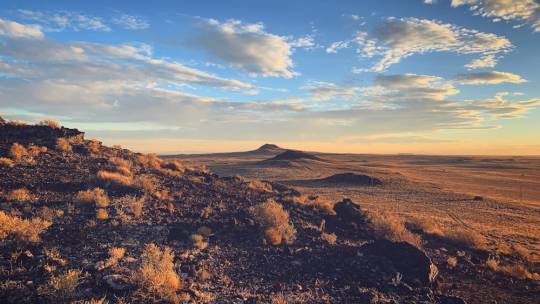
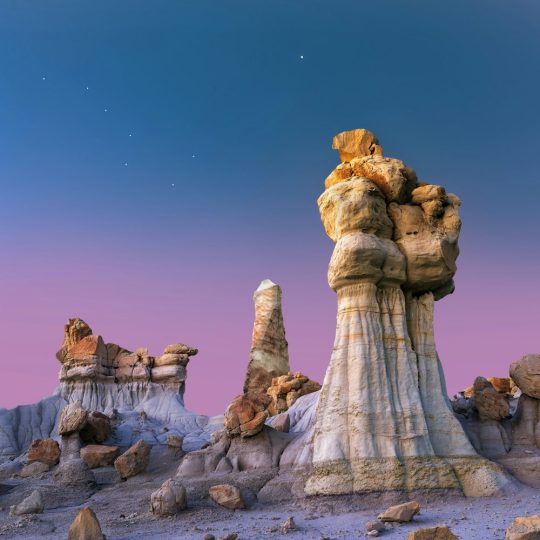

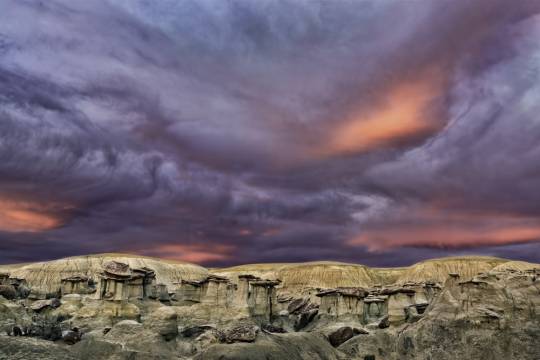
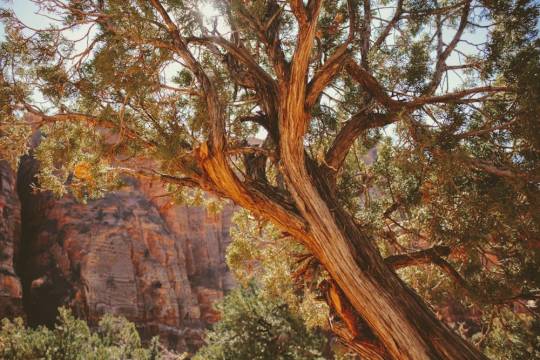
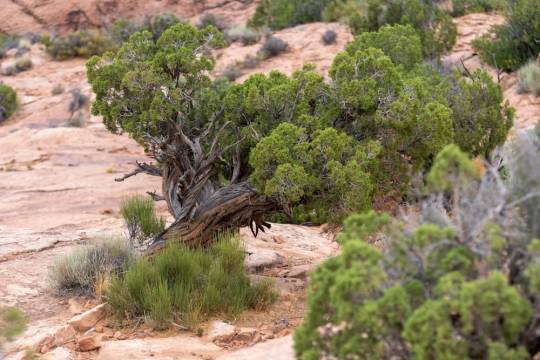
[ID 1: tall, snowcapped rocky mountains rising above a plain filled with desert scrub
ID 2: brightly colored banded cliff walls of several mesas climbing their way into mountains
ID 3: a desert prairie
ID 4: colorful hoodoos against a twilight sky
ID 5: white sand dunes as far as the eye can see
ID 6: a collection of hoodoos against a stormy sky at sunset
ID 7: a juniper tree standing with a cliff wall in the background
ID 8: several juniper trees on a rocky landscape]
54K notes
·
View notes
Text
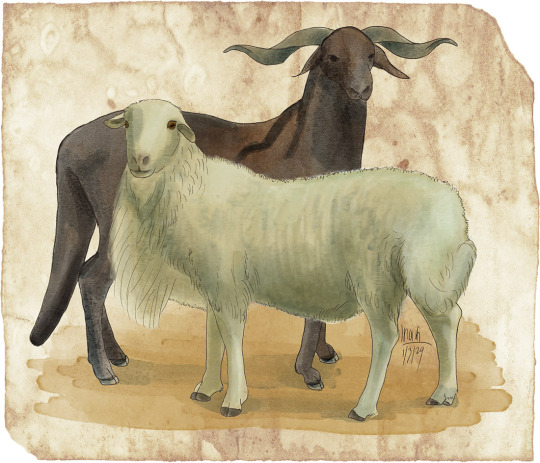
Llayad has sheep, which are basically the Afrikaner sheep (dark one) native to South Africa and the damara sheep (white one) native to Namibia. Both geared for living in the desert, they have fat tails which function like a camel's hump, and they're a particular delicacy to Llayans. Their hide makes for particularly soft leather and is used as gloves and soft shoes. The rams of both breeds have curly horns, which continue to grow through the animal's life. After their death, the horn is used for anything from buttons to serving spoons.
The wooly one is farmed in the mountains, where their wool is used as both the fibre and as the floofy hide for lining boots and such. They have short hair in summer, not as short as the plains breed but enough to keep them cook, then it thickens out to dense wool in winter before being shed in spring. They get brushed every day as they're moulting and their wool collected to be washed and spun as fibre or matted into felt. The hairs are thinner and softer than real-world sheep just cos I find wool can be kind of itchy :< also in a world where they have marsupial fur as a standard soft textile, sheep have something to live up to.
The sleek one is farmed on the plains and is just farmed for meat and hide.
7 notes
·
View notes
Text

This is just the epitome of Australia I mean Kazin >>
I bet you thought the cockatoo was going to be sulphur-crested, didn't you? GOTCHA. This is the PINK COCKATOO, as I discovered, renamed literally this year because it turns out Major Mitchell was actually a bit of a genocidal dick so naming the most gorgeous of cockatoos after him is a bit... not good... so it's a pink cockatoo now. Anyway. Technically this thing lives in the desert and arid regions but y'know what, just look at it. LOOK at this beautiful creature. It has to live in Kazin. So it does now. All the cockatoos live in Tsyallaes, so of course the sulphur-crested ones are there, too. I was debating which was the most Extra of the cockatoos, the pink or the palm cockatoo, and went with this one. Palm cockatoo is actually from the tropics so it can stay there, so it won't fit with the other three on the page.
Speaking of, next is the ROSELLA. VERY specifically, this one's an Adelaide rosella. I always thought it was its own unique species but, as I once again learned while looking for refs, it's a hybrid of a straight up crimson rosella, which lives in a Victoria kind of direction, and the yellow rosella subspecies, which lives up along the Murray River. Their regions cross at Adelaide, and hence the Adelaide rosella! Therefore, similar thing happens in Kazin, where the crimson one lives down towards the coast and the yellow one up in the mountains near the Llayan border, and their grounds cross in Sirrona.
Next is a bloody CROW which, you'll note from that link, is technically a raven, but literally nobody but ornithologists calls these things ravens. Listen to that sound clip and try and tell me that's not a bloody crow. Whenever I hear crows and ravens in, like, fantasy shows or whatever, they sound fake. THAT is what a crow sounds like. It go 'WEH, WEH, WEEEEEEEH' like it's simultaneously whinging and also mocking you for whinging. Crows live everywhere except, like, deep into the desert. Side note, yes, that's absolutely the bird after which the Adelaide Crows are named. This is because South Australia's nickname is Crow-eaters, in the same way that Queenslanders are Banana-benders, West Australians are Sandgropers and Tasmanians are Inbred.
Finally, the absolutely iconic MAGPIE. They also live everywhere. Tsyllaes magpies are all the silver-backed ones because the others look Wrong since I didn't grow up with them. This is a magpie, all other magpies need not apply. They're also the only bird here with sexual dimrophism, but it's only that the females have a grey back where the males have snowy white, so I wasn't about to draw another magpie for that. Plus these are all real birds so I don't need to. Fun fact about magpies, every mob has its own song! So whenever I find sound clips of magpies online, they never QUITE sound right. Sure, it's a magpie, but they're not my magpies. The mob I grew up with sounds different from the mob living where I am now. My mob now is BIG, like eight birds. I'd always see them on the oval going to do fitness and they'd be grazing on the grass (looking for worms) and I'd go 'one, two, three, four, five, six, seven, eight ...... nine' cos there was always the one teenager hanging out away from the rest of the mob. I say 'was' because, a couple of years ago, they were all hanging around at the edge of the road with the body of a magpie on the tarmac :( 'One, two, three, four, five, six, seven ...... eight.' So it wasn't the beligerant teenager.
That was a depressing note to end on. Have THIS video of crows rolling down a windscreen covered in snow. They are not Australian crows but you can imagine them doing this :D
Now, because I don't plan on drawing any of the smaller ones because they're hard to see so my guys are likely never going to see them, and they don't know what they are so they're only ever going to describe them as little tweetie birds, have some soundclips of birds of the Adelaide Hills and know this is what I live in and what southern Kazin sounds like:
HONEYEATER which I've used as reference for other birds so the shape won't be unfamiliar here. EASTERN SPINEBILL which love to splash around in the puddles left in the gutters at Mum and Dad's. SILVEREYE which I've NEVER seen but god I know that tweet. GREY SHRIKETHRUSH which I also feel like I've never seen but holy shitballs that SOUND. THAT is the sound of the Adelaide Hills omg. WILLIE WAGTAIL which are from everywhere so not really specifically Hills, but they count. STRIATED PARDALOTE idek what this is but it SOUNDS LIKE THE HILLS.
Also BLACKBIRDS but they're introduced so they don't exist in Kazin. I only put this here because this has more turned into a post about birds of the Adelaide Hills. Introduced or not, it's still a sound of the Hills.
#crow#raven#magpie#rosella#cockatoo#australian crow#australian raven#australian magpie#pink cockatoo#birds#artists of tumblr
5 notes
·
View notes
Text

This is almost entirely unchanged from the original, I've just gone over them all with watercolour to fit the rest of my wildlife fact file pics. I will therefore copy-pasta all the text from last time.
Makakis came about because screw horses. Horses are way too finicky. Horsey people are very knowledgeable about horses; I couldn't give a shit about horses. I give up trying to make my horses realistic.
Also, on a side note after seeing a bandicoot digging at Mum's lawn yesterday, I had the idea that most mammals in Tsyllaes should really be marsupials, what with it being based pretty heavily on Australia and all.
I decided to try combining these ideas, starting with real marsupials, the extinct megafauna. Honestly the only one big enough to ride is the giant wombat, which absolutely bloody exist in Tsyllaes now, but not overly convenient as a steed. I looked then at extinct mammals to see if anything else might be useful, and came across the macrauchenia, some weird South American creature which was its own evolutionary branch, unrelated to anything else that currently exists. The closest they've got is the tapir/horse/elephant branch. PERFECT. Also I can find virtually no info about this thing.
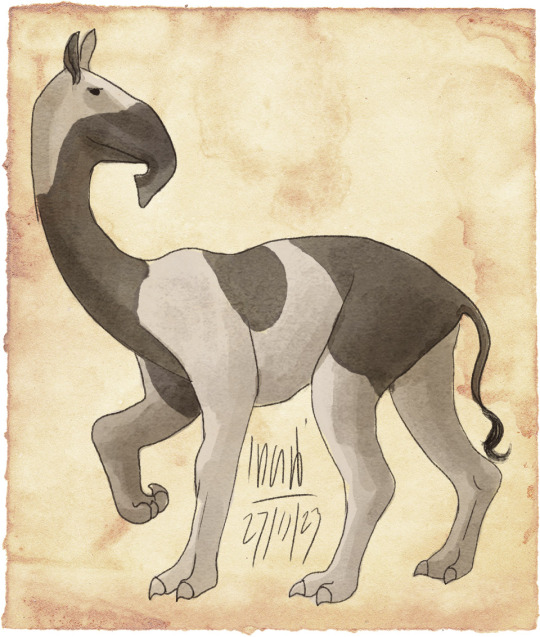
The common makaki is the one people think of whenever they think of a makaki. In keeping with their not-horse origins, their patterning is generally anything that a horse can be, as well as in keeping with their being marsupials, anything marsupials can be. They're about 2m tall at the shoulder, so significantly bigger than horses, but they're also very chill with sitting, most often lounging like kangaroos. I wanted to draw one lounging here but I needed to show the heights, so I'll do that when I eventually draw the Own's makakis. They have three toes on each foot, which makes them more agile and gives them stronger ankles than horses so the sodding things don't break their ankles. They live mostly in the mountains and hills of Kazin, Llayad and northern Raykin, where they use their snoots to pull leaves off of trees for food, occasionally fruit if they can get it but they're fine off leaves. They're suited to Kazin's open forests and the plains of Llayad, not so good in full desert with their comparatively small feet and need for water. Those from tropical forests and the Llayan savanna have no mane while those from the colder mountains have manes all the way down their back. The particularly cold border between Llayad and Kazin also breeds them with floofier coats. Llayans call these ones Kazinian makakis, because Llayad has their own 'common' one.
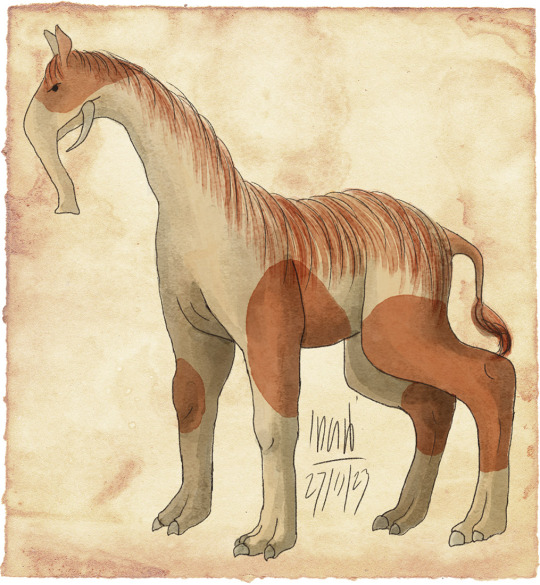
The destrier is the one bred for battle. Bigger than the common makaki and with very strong legs, especially the back legs for springing forward from a stationary start. They have the longest tusks of all makaki breeds which can be an extra weapon in battle, and longer trunks, too, cos. I dunno. I felt like playing with the trunks. I'm sure there's an application for that. Also, side-note, this one's Mongrel! After drawing all the boys' makakis, I've better figured out how their anatomy goes, so I've tweaked this one a fair bit from the original, giving him longer, thicker legs and changing how the back legs kink to be more like how I've been drawing them, a bit more strength and spring to them.
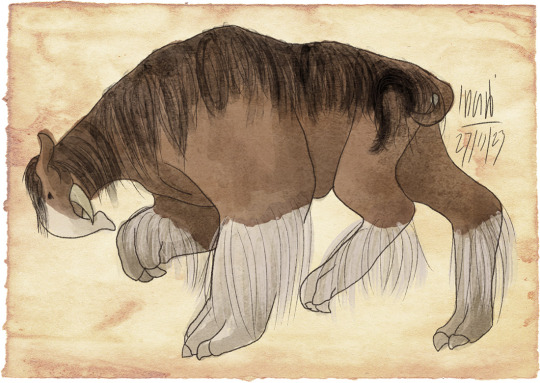
Oooooh he's a big, beefy boy, this one. The draft makaki has been bred for pure strength, huge forequarters for pulling heavy carts and plows, big feets for digging, strong trunk and tusks for pushing over trees and hauling branches.
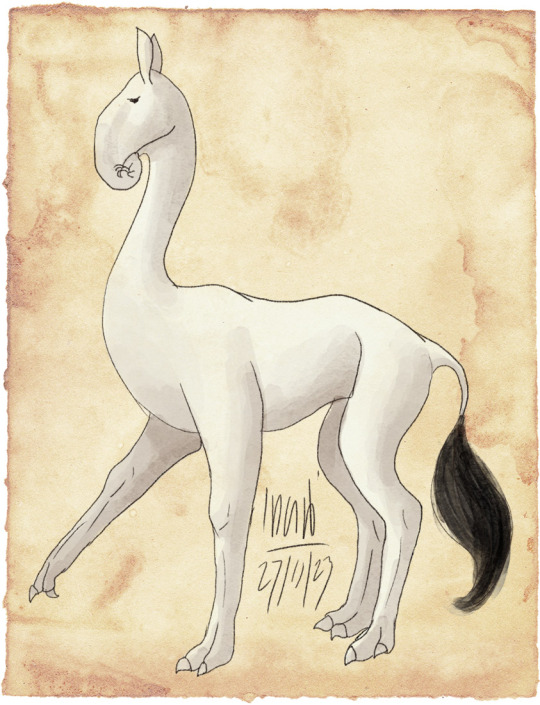
By complete contrast, Assiraz's makaki is bred purely for looks. The more snowy white, the pricier the animal, except their swishy gorgeous tail which has all the colours. Long, elegant legs and slender, curving neck. They're named after Empress Assiraz, who was the one to start breeding them in the first place. Literally their only use is to keep nobility's skirts clean and elevate them above the plebs, so in that regard they're highly practical. For anything much else, they're kinda useless.

Native to the tropics and bred for its meat, the stocky little tapi has patterning on its back like a giraffe and range from grey, like the above, to dark brown with black spots to better camouflage. They taste like camel. I've never eaten camel so just roll with it.
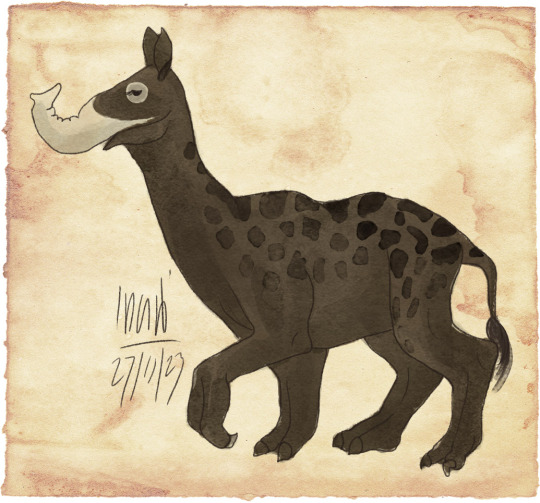
DONKEY. Or more technically a mule, but I just wanted to call it a donki. It's a hybrid between a tapi mare and common stallion to make a smaller makaki, less fragile in the legs giving them greater endurance than the common makakis, but because they're much smaller they're cheaper for the average Kazinian. More than half the donkis are sterile, which makes those ones nice and cheap for the poorer Kazinians, and even those which can breed are still significantly cheaper than common makakis and WAY cheaper than draft makakis.
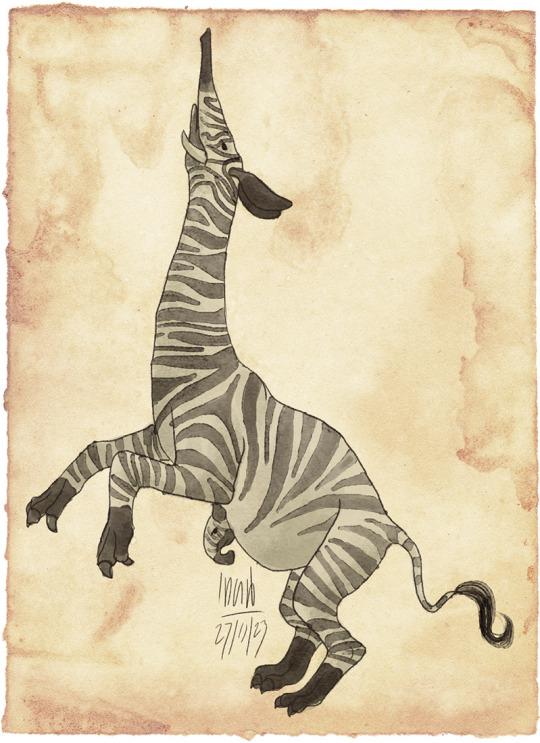
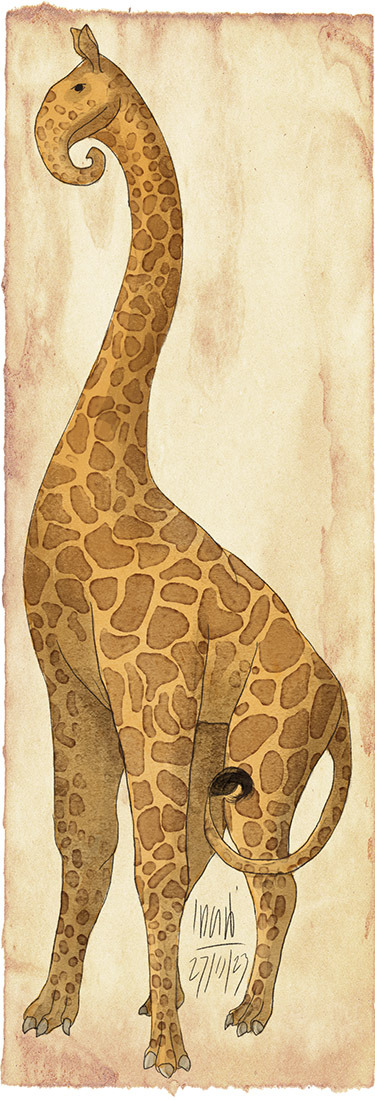
The two Llayan makakis, first one just called the 'Llayan makaki,' but, as mentioned before, Llayans call this one the 'common makaki' and the other one the 'Kazinian makaki'. She reach! And she has a foal in her pouch :D Llayan makakis are a bit smaller than the Kazinian ones. Also, because they're not actually zebras, the dark stripes can be any colour, though herds are mostly all of one colour.
Secondly, the rigaffe! Tollu girl is tollu, though I did shrink her a bit from the original. I think they also have colour variations, too, but always with the giraffe-like patterning. If you're wondering how the joey gets back in the pouch, it doesn't. Once the joey has left the pouch, that's it, it's out for good.
#makaki#assiraz's makaki#common makaki#destrier makaki#donki#draft makaki#tapi#llayan makaki#rigaffe#marsupial#kazin#llayad#artists of tumblr
2 notes
·
View notes
Text
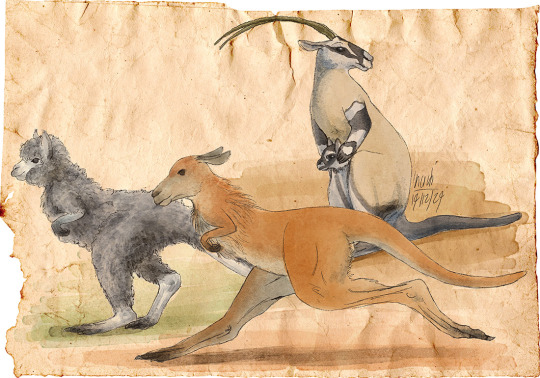
A few months ago I watched a doco about Australian extinct megafauna, one of which being the short-faced kangaroo. Bugger was huge, and had chonky bones. Through some mathsing and 3D modelling, the researchers showed it could have hopped, but only comparatively short, cumbersome hops, nothing like the effortless efficency of modern roos. So the theory is that they walked, one foot in front of the other, more like a t-rex. They were striders, not hoppers. So this was my gateway into getting kangaroos into Tsyllaes without them screaming 'Australia' too loudly. Striders!

This is the Raykinian strider, size of a red kangaroo and runs very fast. The face I've made more like a llama, purely because makakis, my other large marsupial, have very much been inspired by camelids in their general shape and also their faces (just add trunk and tusks) so to tie them together a bit more I've given the striders camelid faces, too.
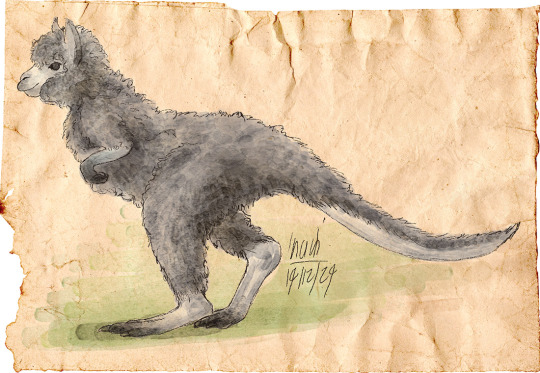
Up north, the Kazinian striders are the size of grey kangaroos, because they're in the mountains instead of open desert, and they get faces and floof from alpacas :D Tropical Kazin also has striders, but these will just be straight up tree kangaroos under the name of tree strider so I can't be arsed drawing them.

Finally, Llayan striders are mid-sized between the other two, and they're more heavyset because there are more and bigger predators in Llayad than in Raykin or Kazin. They get the markings of an oryx, because they're cool, and therefore also horns because why not make a cool animal even cooler? Possibly I also needed it to look less like a kangaroo when it was just standing there, but mostly it's just cool. Oh and it gets the face of a guanaco, another of the camelids I use for makaki refs.
Tsayth does not get a strider cos I couldn't figure out how to make one work in the Shallows without just turning it into a seal.
1 note
·
View note
Text
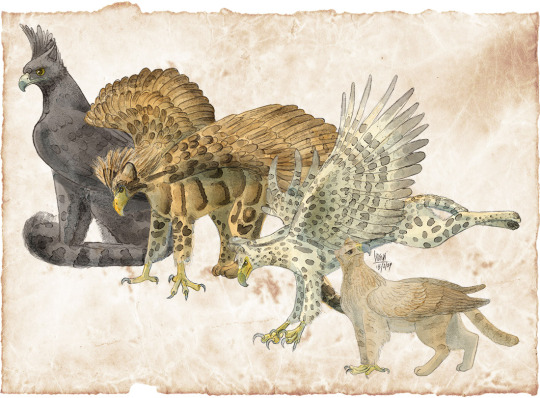
I like griffins with the front legs being the eagle's legs, otherwise to me it just feels like a cat with wings and an eagle's head. Also, because these are real creatures in Llayad and not beings of myth, they aren't gonna be the size of lions because I can't envisage something that big being able to fly. So they're not big cat sized. Also more exist than just these four, these are just the ones to fill all the biomes so I've got something. If I need more later then I can make more.
Llayan griffins are, as I say, like any other wild animal. They live as mated pairs for life and have a clutch of three eggs every five years. As the chicks learn to hunt and become more independant, the parents take less and less part in their lives and they leave to find their own territories.
The legend goes that a griffin's feather restores sight to the blind, but only when given as a gift. I wrote a story about that about a decade ago. Idk whether the legend is true or not, but I don't think so.
The griffin is also one of the zodiac creatures, the sign for those born in the first half of autumn. I'll get into that when I draw the pics for the zodiac =3
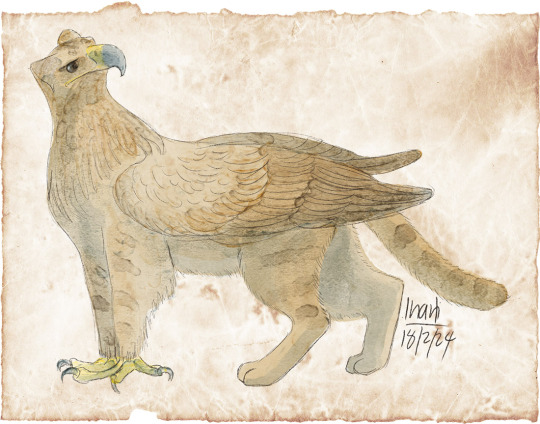
The tawny sand griffin, the only truly desert-dwelling griffin. It's only small, smaller than your average house cat, with a stumpy little tail and floofy paws so its feet don't get burnt on the sand. Named the tawny sand griffin cos I used a tawny eagle and a sand cat as reference, both natives of the African desert. Sand cats are tiny adorable babies.
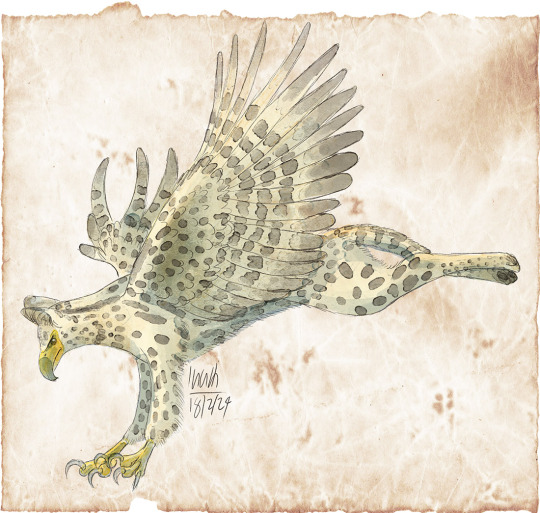
The original griffin I created based on a serval! This one's the native of the savanna. Loooong elegant legs, much pretty kitty :D
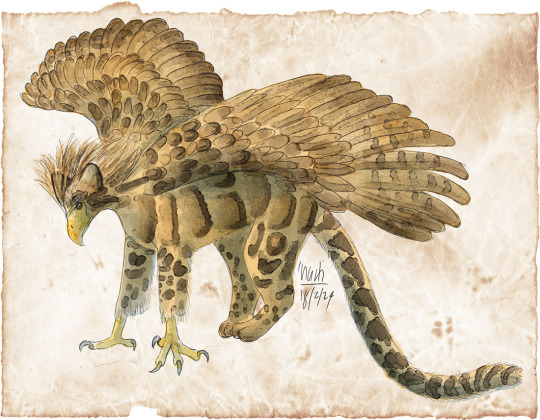
Clouded griffin of the Llayan forests and lowlands, based off a clouded leopard because I LOVE those things. They're from the rainforests of South-East Asia, so not quite Africa but still fits in my world. I therefore also googled eagles of SEAsia and found the Phillipine eagle, which has an impressive mane, so this is the only griffin with a mane.
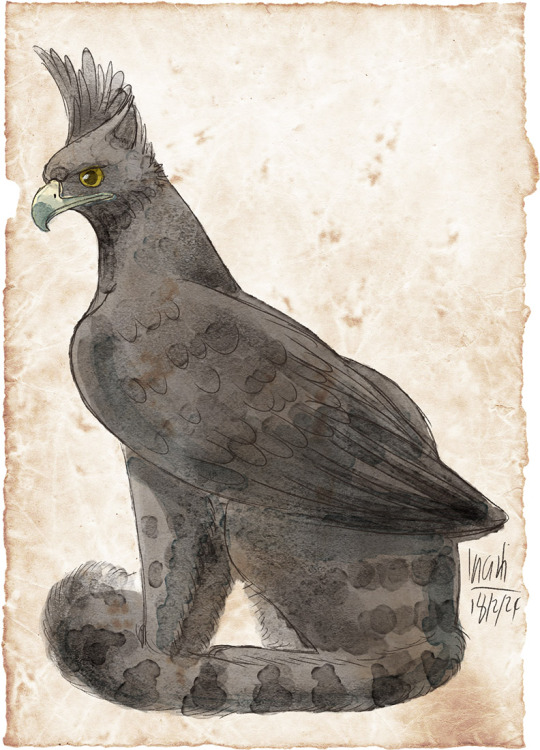
The biggest griffin, from the Llayan mountains. These aren't based on anything in particular, though I used a crested eagle as ref for the eagle part, the mottled grey/black patterning just fits the mountains.
#griffin#llayad#wildlife#llayan wildlife#tawny sand griffin#serval griffin#clouded griffin#mountain griffin#artists of tumblr
0 notes